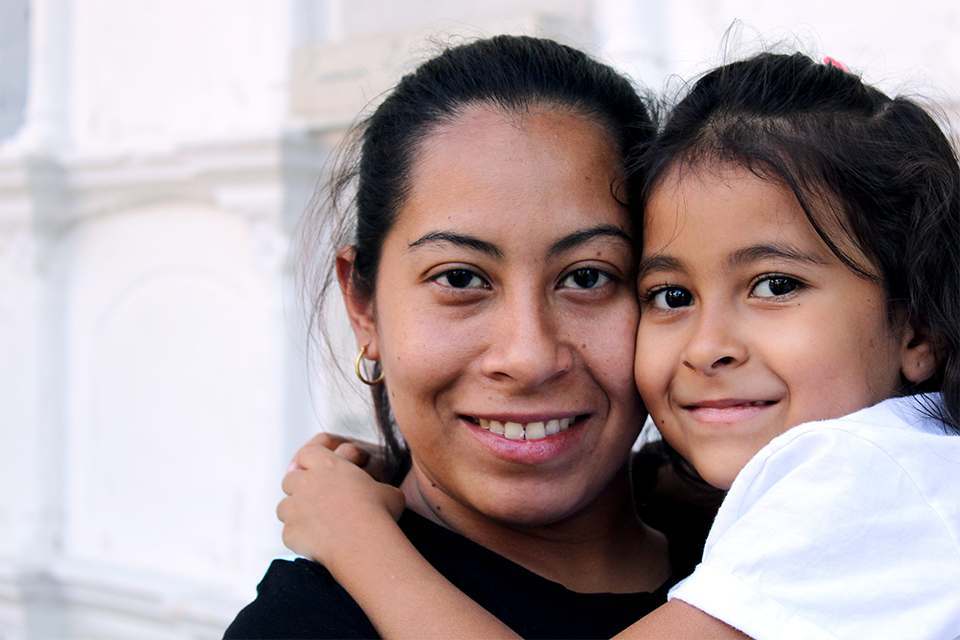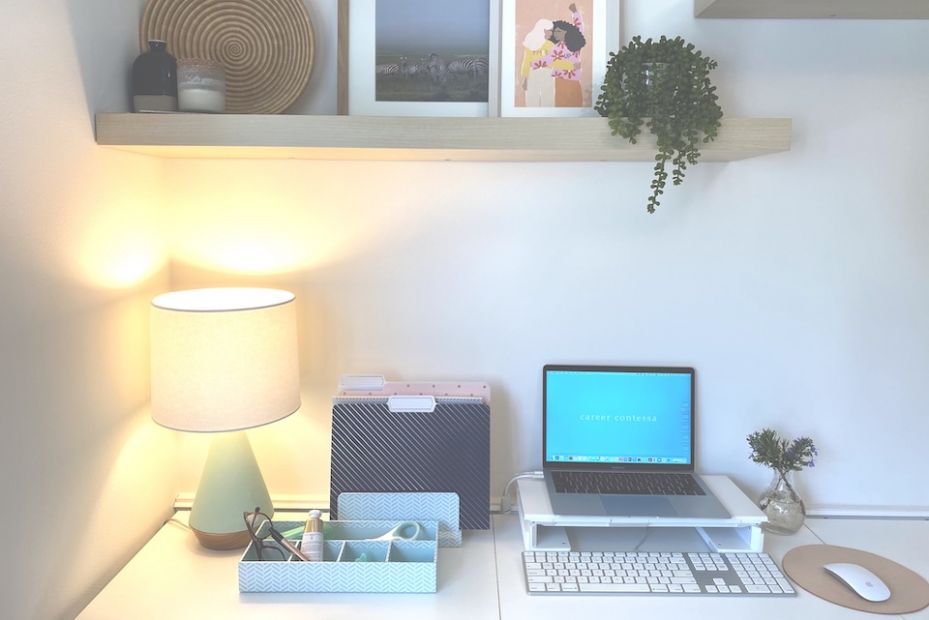A young woman joins the workforce after graduating from college, she quickly climbs the corporate ladder and becomes the so-called “breadwinner” of the family. You’ve heard this story before.
And it’s a great story, nevertheless, that gives a young woman like me hope and direction. But what happened to the stories about women who leave the workplace to prioritize their children or family? When I was six, my mom quit her job to become a stay-at-home-mom. After raising me, she returned to the workforce—and faced an entirely new kind of job search. Until now, I’d never asked her about that experience. In this interview, you’ll learn major life lessons that I had no idea I needed.
She is that woman who entered the workplace, became successful in her career, and made good money. But she is also a woman who left it all behind for her top priority: me, her one and only child. Many of us don’t know or understand the life of a stay-at-home-mom, but if there’s one woman who can open our eyes, it’s my mom.
We’re uncovering truth, shattering stigmas, and sharing an important story that goes against traditional career narratives. You never know what life will throw at you and what difficult decisions you’ll have to make along the way. My mom’s story is a testament to how having a strong character in the face of these difficulties can help you succeed in the end.
Deciding to take a career break isn’t an easy decision for any woman.
How It All Began
Following her graduation from Scripps College, my mom started her career, working “at May Company for six years, and then at Target for eight years.” Target offered room for growth, and my mom quickly climbed the ranks.
“I started out as an assistant store manager and I had different merchandising and operational responsibilities. [After about three years,] I became a store manager. Shortly after that, maybe a year later, I was asked to be in the district team leader training cohort for more team leaders as the company was growing. I did that for two years in training, and got transferred to San Dimas full-time. It was almost a reward to be able to work more closely to home. That was in the fall of 2000, and then I “retired” for the first time in October of 2001.”
Deciding to take a career break isn’t an easy decision for any woman. But I was surprised to learn that the holiday season was what pushed my mom into hers. “Originally when I first stopped working I was just going to be off for the holiday season, and get to spend the Christmas with you. Christmas is the worst time of the year at Target, and I would usually get home at ten o’clock and you’d already be asleep. On Christmas Eve I’d be at the dinner table, eating cold Chinese food, drinking champagne with dad while crying. The plan was just to find another job in January, since the economy was so strong.”
But once January rolled around, things changed. My mom saw a noticeable shift in our family dynamic, and decided to go full-time as a stay-at-home mom.
“We realized that the three of us were much happier. None of us were crying every day. I was sleeping. So we decided to make a go of it. I was seeing a therapist at the time, and she asked me, “What is Lily’s opinion about you being home?” That was my therapy homework for the week. I remember asking you one day after school, “What do you like about me being home?” And at that age, you weren’t one to throw me a bone, so I rephrased and asked, “What do you not like about me being at home”—and you said, “I know you’re going to leave again.” That was a gut punch to my heart. And I looked at you and said, “No, I’m not. I’m not going to leave this time.” Your expression told me everything—[it] explained the impact of how I wasn’t home very much when you were little.”
For 13 years, she did just that. But the road wasn’t always easy—especially when it came to managing money and finding supportive women that understood our family’s values.
Over time, my mom found the right community that was able to understand her...An important lesson that I’ve carried with me—your people are out there somewhere.
Overcoming Money Anxiety and Prejudice
My mom “was making 5/8 of our [household] income” at the time, and while Target “paid [my mom] a lot of severance and vacation, that [she] converted to stock options,” there was still a lot of stress around money.
“It was really scary because we never really thought or worried about our financial stability when I was working. There was never any doubt or concern. I needed to justify being home by “if you’re going to do something, you need to be the best at it”—and so I needed to not only be a homemaker, but a domestic goddess. I already had a strong skill-set from being raised by my mother and grandmother who knew how to do everything. But I really had to wrap my head around my self-image—if I wasn’t this very successful breadwinner, I was going to be a very successful homemaker.”
Anxiety about money wasn’t the only thing that made the road a bit rocky. Finding a community of women that supported and understood my mom’s decision was easier said than done. “Right away I found and made good friends with two other “stay at home” moms who were well educated and super engaged with their children. When I felt uncertain with my decision, I felt supported by the fact that [they] had made the same choice.” But come third grade, when the teachers changed and so did the classroom assignments, my mom was faced with a group of women who were “ not the nicest people, envious and not supportive.”
Take one particular instance as an example: “I remember one of them had said, 'I bet your house looks perfect—well, it should, since you’re not working.' There was definitely animosity, I would say, amongst other elementary school moms. I would always tell them that what I’m doing is easier than trying to be a working mom. I was constantly trying to bend over backward to prove in words and deeds that I acknowledged the moms that were working outside the home, how difficult and torn they felt. It wasn’t always appreciated, but I tried to be kind and supportive.”
This struck a particular chord with me. Many people, both men and women, will maintain relationships with individuals who are negative forces in their lives. Is it the fear of exclusion? Or feeling lonely? For my mom, she stayed friends with these not-so-nice women because she was “still pretty insecure.”
“That group of women was not the group I should have been hanging out with. They weren’t friends, they were acquaintances by proximity. When you joined middle school, I was quickly cast aside which was hurtful. But it was also around the time when Dad and I joined book club. That was a whole new group of women, and they were all really supportive. I found that women who were older than me, were unanimously more supportive, kind, and encouraging. I found a community of women who I could intellectually respect who had also made a similar choice. Women my own age seemed to be really insecure and competitive, and some of them resentful.”
Over time, my mom found the right community that was able to understand her life as a stay-at-home mom, from an intellectual and personal point of view. An important lesson that I’ve carried with me—your people are out there somewhere.
Her overall advice? If you, or someone you know, is considering being a stay-at-home mom, “do it—it’s time you’ll never get back.”
Re-Entering The Workforce
After deciding to focus solely on being the best stay-at-home mom that she could be (which she excelled at, in my humble opinion), she decided to re-enter the workplace when I went off to college. The parameters for her next job where simple: “[she] wanted to work part-time and in something that [she] would enjoy, interact with smart people.”
My mom “applied to a lot of jobs and interviewed for three all in higher education.” And upon leaving the “interview with the team [she’s] still on now, [she] got all choked up with excitement.” Over the last four years, my mom has gone from only “20 hours a week to 35 hours a week within months, and at the two-year mark, went to 40 hours full-time with a salary.” Talk about boss moves.
As a woman at the beginning of her career, I can’t even imagine what it would be like to be out of the formal workplace for over ten years. Now, more than ever, there are resources to help women re-enter the workforce after taking time off — for family, for mental health, whatever the case may be. And so I wondered, what was that experience really like? What pushback did people give my mom?
“I found that the people I was talking to in higher education didn’t care, they just wanted to know what I was doing. It was really important to emphasize the skills I had developed through cultural activities. I wasn’t really applying for high-level jobs, which was by design and not by default, and they just wanted to know what I had been doing. Most people are super interested and supportive. I definitely found my people in higher ed."
It’s clear that knowing how to talk about how you spent your time will be your most valuable asset. Find “volunteer opportunities—self-worth is [often] tied to your job, so you’ll have to find your self-worth in yourself and in volunteer opportunities. Don’t make your child your full time job, it is too much pressure to put on a child.”
Her overall advice? If you, or someone you know, is considering being a stay-at-home mom, “do it—it’s time you’ll never get back.”
Before this interview, I only knew the experience that I had with my stay-at-home-mom. I wasn’t aware of any negativity or personal struggles that accompanied my mom’s decision. As someone who works a standard nine-to-five job in an office, I view those who work for themselves or stay home with their kids to live a luxurious life.
But the biggest lesson from this interview? We all have difficult, unique challenges. And before jumping to conclusions or making assumptions, asking sincere questions can make a huge impact on your perception of other people.
Thank you, mom, for making a really scary decision that will forever impact who I am, where I’m going, and what I will become. To all past, present, and future stay-at-home-moms—you are celebrated and appreciated for all that you do.












